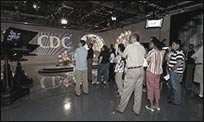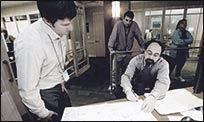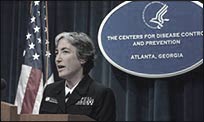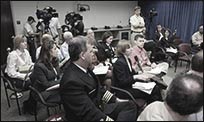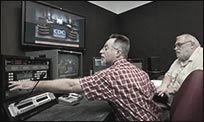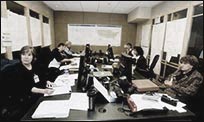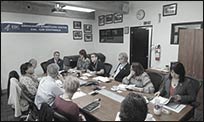CERC Manual
CDC’s Crisis and Emergency Risk Communication (CERC) manual is built around psychological and communication sciences, studies in issues management, and practical lessons learned from emergency responses.
CERC Manual Chapters
The CERC manual is intended for public health professionals and public information officers who may need to communicate to the public during an emergency. It can be used in preparation for and in response to an emergency or in support of CERC trainings. The manual contains tools and annotated resources.
Last updated 2014
- Types of emergencies and factors that increase the risk of crisis
- Definitions of crisis and emergency risk communication (CERC) concepts
- Lifecycle of CERC and how communication works at each phase of a crisis
Last updated 2014
- The four ways people process information during a crisis
- Mental states during a disaster, such as uncertainty, helplessness, and hopelessness
- Risk perception and behaviors
Last updated 2014
- Understanding your audiences and gathering audience feedback
- Making facts work in your message
- Organizing information for emergency response presentations
Last updated 2014
- Phases of a crisis
- Developing the plan
- Applying the plan throughout CERC lifecycle
Last updated 2014
- The role of the spokesperson in crisis communication
- Characteristics and best practices of a spokesperson
- Working with the media and public meetings
Last updated 2014
- The media’s role in a crisis, disaster, or emergency
- Interacting with the media and developing positive relationships
- Meeting media needs throughout an emergency
- Responding to media regarding significant errors, myths, and misperceptions
Last updated 2014
- Responding to your stakeholders and partners
- Crisis coordination and crisis collaboration
- Working with communities
Last updated 2014
- Communication channel attributes
- Channel characteristics and features
- Applying specific communication tools
Last updated 2014
- Social media’s relationship with mainstream media
- Role of social media in a crisis
- Responding to social media regarding serious errors, myths, and misperceptions
Last updated 2014
- Challenges to communicating during chemical, biological, nuclear, or explosive (CBRNE) events.
- Understanding psychological responses to terrorism
- Communicating about the Strategic National Stockpile (SNS)
Last updated 2014
- Appropriate staffing and preparation to maintain the well-being of communicators
- Preparing for and addressing the mental health of responders and their families
Last updated 2014
- Key federal government agencies that may be involved in an emergency response and their roles.
- How communities, local and federal government agencies, and national and international organizations coordinate and communicate in a response
Last updated 2014
- Laws and regulations that protect privacy
- State public health emergency powers
- Laws regarding freedom of speech, Freedom of Information Act, and Copyright law
Print Copies of the 2014 CERC Manual
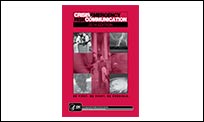
A PDF of the complete 2014 version can be downloaded here: Crisis and Emergency Risk Communication – 2014 Edition
There are a limited number of hard copies of the 2014 Manual. To order a manual, please submit the Order Request Form. Orders must be for two or more manuals.
- Page last reviewed: April 27, 2017
- Page last updated: April 26, 2017
- Content source:
- Maintained By:





 ShareCompartir
ShareCompartir


